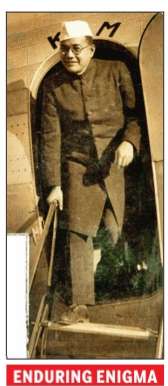Book review
When Godavari Comes: People’s History of a River–Journeys in the Zone of the Dispossessed by R Uma Maheshwari, New Delhi: Aakar Books, 2014; pp 486 + xviii, Rs 595.
N Venugopal (venugopalraon@yahoo.com) is the editor of Veekshanam, a Telugu monthly journal of political economy and society.
Polavaram multipurpose irrigation project across the Godavari River is likely to displace more than 3,00,000 people, mostly Adivasis, by submerging over 300 habitations. It will also submerge forests with rich biodiversity, a hill range, a river and several streams, agricultural lands, and cultural sites. The highly controversial project, first envisaged in the 1940s under the colonial government, was actually taken up by the Government of Andhra Pradesh in 2006, without proper sanctions and clearances from many statutory bodies. The project violates safeguards provided to Adivasis in the Constitution as well as several legislations, including the Panchayat (Extension to Scheduled Areas) Act (PESA), 1996, the Forest Rights Act, 2006 and the Right to Fair Compensation and Transparency in Land Acquisition, Rehabilitation and Resettlement Act, 2013.
The works on the project began and continued without approvals like clearance for revised costs by the Expenditure (Finance) Committee; Central Electrical Authority’s clearance for power component; approvals from gram sabhas in the submergence areas in Odisha and Chhattisgarh states; approval of Forest (Conservation) Act for submergence areas in Odisha and Chhattisgarh; techno-economic clearance from the Central Water Commission (CWC); and CWC approval for dam design and operation schedule. In fact, the project is under litigation with several cases pending in the Supreme Court (SC) filed by governments of Chhattisgarh and Odisha as well as environmental and Adivasi groups. The project is also in violation of the National Tribal Policy as it violates the direction, “any project which displaces more than 50,000 tribal people should not be taken up.” In 2006, the SC appointed a Central Empowered Committee (CEC) to study the concerns and the CEC report said,
there is, therefore, a strong case for a second thought and explore alternative location and design of the dam to avoid the colossal loss in terms of apprehended sufferings and disruption of life style of the local inhabitants.
Tussle between States
Despite these counterpoints, the Government of Andhra Pradesh continued the works without any respect for the legal process, technical objections and social debate. The people’s movement for bifurcation of the state and formation of Telangana somewhat slowed down the pace of the works and during the movement, many Telangana votaries including Telangana Rashtra Samithi (TRS) opposed the construction of the dam, primarily on the displacement plank. However, when the Andhra Pradesh Reorganisation Bill was moved in Parliament, recognition to Polavaram as a national project was mooted. The leaders of would-be Andhra Pradesh expressed suspicion that Telangana may oppose the project and raise litigation if the to-be submerged villages are left in Telangana and sought the villages to be given to Andhra Pradesh. All the villages passed resolutions in their gram sabhas to retain them in Telangana.
The bill became an Act in February and in May, the new government that came to power in Delhi promulgated an ordinance favouring the demand of Andhra Pradesh, transferring six mandals and some villages. Telangana immediately responded with a bandh called by the ruling party TRS against the ordinance, but, later the ordinance (amendment to the act) was almost accepted, without even challenging it in a court of law. The funniest part is that the “people’s representative” elected by the transferred villages now sits in Telangana Assembly while the people he is supposed to represent live in another state!
Movement and Resistance
Thus, Polavaram is a classic case of Adivasi displacement, deception, violation of laws, political gimmicks, constitutional and legal improprieties, corruption, etc. Notwithstanding this unique position, the comprehensive story of Polavaram is yet to be told. Over the last decade, it occupied a large space in local language media but not the deserving attention of the country. Though the people in the submergence zone as well as outside have been fighting against this gross injustice, the people’s movements against displacement have not attracted national attention. In this context, When Godavari Comes: People’s History of a River by R Umamaheshwari is a much-needed and remarkable attempt based on a number of journeys the author made in the zone of the dispossessed during five years between 2006 and 2010 and updating her story till mid-2014. (మరింత…)
Leave a Response »
 It was in 2006 when Lakshmi Prabhala, then an IT employee commented on a blog posted by Sadhana Ramchander that led to an unexpected friendship. Lakshmi recalls, “It was a post on Bathukamma, about which not much was known then. I asked her if I could tag along with her on her future visits and that’s how we became acquainted with each other.” The association became professional with the release of their book on Hyderabad (Hyd and Seek) in 2015. The duo have recently finished their second book, Orugallu to Warangal: Journeys across Time, which pays an ode to the city and captures succinctly, its rich history, architecture, customs and festivals.
It was in 2006 when Lakshmi Prabhala, then an IT employee commented on a blog posted by Sadhana Ramchander that led to an unexpected friendship. Lakshmi recalls, “It was a post on Bathukamma, about which not much was known then. I asked her if I could tag along with her on her future visits and that’s how we became acquainted with each other.” The association became professional with the release of their book on Hyderabad (Hyd and Seek) in 2015. The duo have recently finished their second book, Orugallu to Warangal: Journeys across Time, which pays an ode to the city and captures succinctly, its rich history, architecture, customs and festivals.



